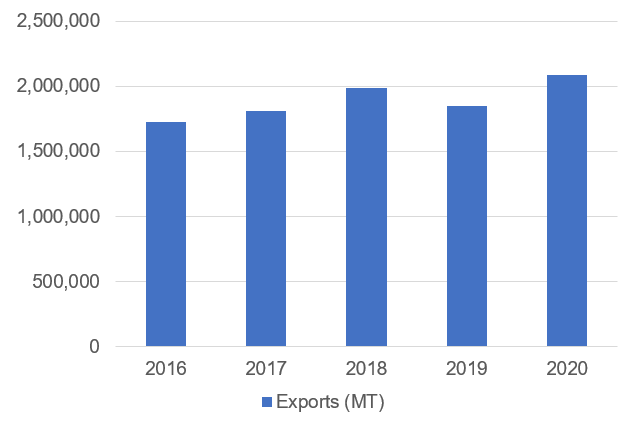The recent below-zero temperatures in Texas and a blast of late-winter snowstorms aren’t the only signals that climate conversations are destined to become more prominent in agriculture. The Biden Administration is showing its desire to participate actively in global decision-making, rejoining the Paris Climate Accord and making climate an early focus of executive orders. Congress is expected to tackle climate-change legislation this session. And newly confirmed Agriculture Secretary Tom Vilsack has pledged to make climate change – and climate-friendly incentives for farmers – central to his agenda in his leadership return at USDA.
And that’s just in the United States. Globally, climate concerns and food-production discussions are merging, with sustainability increasingly moving from buzzword to marketplace demand, to potentially a requirement to participate in the global food system.
The United Nations is convening a Food Systems Summit in September in which agriculture and sustainability will be the central discussion, and we are working shoulder-to-shoulder with our colleagues at Dairy Management, Inc. and the U.S. Dairy Export Council to make sure U.S. dairy’s leadership is recognized and to partner with other organizations in underscoring the nutritional value of our products as well as the sustainability advances already achieved. But the UN conversation could easily turn negative for dairy, given the role that anti-animal agriculture voices are playing in driving it.
Real movement domestically – and real threats globally – make it imperative that dairy be active as important choices are made. Fortunately, the dairy community, through the hard work of farmers and support for their efforts throughout the entire supply chain, has a proactive, positive story to tell. The Summit offers an opportunity we must seize to tell our story, which is essential in this new era.
We in dairy know just how effective we are in sustainably managing our operations. The U.S. dairy industry is responsible for less than two percent of the nation’s greenhouse gas emissions. Much of that is methane, a relatively short-lived gas that has an impact many scientists say is likely overstated. Meanwhile, according to the Food and Agriculture Organization of the United Nations, North American dairy – which is dominated by U.S. production – is the only dairy region in the world where absolute emissions decreased from 2005 to 2015, by a total of 5 percent. That occurred even as milk production increased over that same period.
Dairy is already part of agriculture’s climate solution, but U.S. dairy is going even further. Our Net Zero Initiative will make domestic dairy production carbon-neutral by 2050 and is accompanied by quantifiable, verifiable goals that will guide the industry to that destination.
We are also playing a leading role in seeking the public-policy solutions and incentives necessary to make plans reality. Last week we announced our membership in the Food and Agriculture Climate Alliance, a coalition of organizations across food, agriculture and the environment that collectively seek voluntary, incentives-based and market- and science-driven approaches to tackle climate policy and build resilient rural communities. Through leading by example in agriculture and building consensus among its constituents, U.S. dairy farmers can meet ambitious goals that will improve our prosperity as well as the planet’s health, with benefits for all.
But before we paint an outlook that’s too rosy, an important note: For all our leadership within the U.S., numerous vocal advocates in the world are in a different place.
While we seek solutions, others, many of whom have an interest in agriculture but live outside it, are calling for certain farmers not to be part of a “solution.” Instead, such farmers would be swept up (and perhaps swept aside) by “revolution,” one they envision would create a sector with less (if any) livestock, fewer farm inputs, and a bias against technological innovation. As U.S. dairy relies more on global markets, and as global actions on climate-change increasingly affect how the U.S. does business, these realities become ever-more-important to address.
As always, the solution is to never shrink from the challenge. The common goal of improving the planet requires neither surrendering to a misguided agenda nor ignoring the problem. Again: We all know what a positive story dairy can tell and the sizable sustainability investments that the U.S. dairy sector in particular is making. Tangible progress on emissions. Innovative practices that can be widely adopted in all regions, on farms of all sizes, with proper incentives. Ambitious goals backed by data. The reality is the world would be better off if the rest of the global dairy industry became as efficient – in milk production and resource use – as U.S. dairy. But much of the global audience, through misunderstanding or simple self-interest, is skeptical of this message.
This is our task in advocacy. As we’ve seen in recent years, in our response to the coronavirus crisis and to our own economic challenges, we can get things done when we’re united and clear in what we set out to achieve. Dairy can and will be – and in fact, always has been – a positive contributor to sustainability solutions. Our products nourish people around the world, and we care for its resources well. Tumultuous weather will always be with us – but with growing shifts in climate, those challenges are becoming more calamitous. We are rising to the challenge as well, as a domestic and global solution and as an informed voice in all debates. We look forward to the opportunity.








